Posts tagged genes
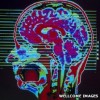
Jumping genes in your brain?
Apr 26th
Mobile chunks of DNA that walk their way from one position in the genome to another may affect neurological diseases and could have subtle influences on normal brain function and behavior, according to a recent study in Nature.
Alu is an example of a so-called “jumping gene” – a transposable DNA sequence that “reproduces” by copying itself and inserting into new locations throughout the genome. Alu elements are classified as SINEs, or Short INterspersed Elements. All Alus are approximately 300 bp in length and derive their name from a single recognition site for the restriction enzyme AluI located near the middle of the Alu More >
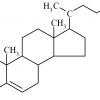
Bad Cholesterol
Apr 12th
When someone mentions cholesterol many will say, how is your HDL? Cholesterol travels through the blood attached to lipoproteins. From a health prospective we try to maintain the good cholesterol (High density lipoproteins or HDL) and decrease the bad cholesterol (Low density lipoproteins or LDL). The HDL aids the body in removal of bad cholesterol in the blood whereas LDL causes build up of plaque within arteries restricting blood flow and hardening of the arteries that may result in heart disease. Control of cholesterol levels is through a number of ways such as low cholesterol diets, weight loss and drugs.
Cholesterol More >
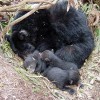
Hibernation – Why Not Me?
Feb 16th
It’s the season of hibernation, something I’ve always wished I could do. Oh, to wrap up in a ball, sleep away the winter, and wake to a beautiful spring day – like Bambi! Although the thought has always intrigued me, it never really occurred to me what a feat hibernation actually is. It turns out that all of the bears, squirrels, rabbits etc…. that I thought were just sleeping, are breaking biological laws!! If I was to stay dormant for 5 months, without food or drink and little to no movement in freezing temperatures I would die, so no hibernating More >
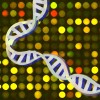
Harnessing the power of bioinformatics in cancer research
Nov 22nd
One of the biggest challenges facing cancer researchers is that the disease varies so much from person to person. Even the same type of cancer – lung, brain, breast, colon, and so on – can be subtly different. This means that a therapy that works well in one patient may have no effect in another.
So researchers in the UK brought in the big guns – bioinformatics.
Cancer Research UK has set up seven British centers to start collecting 9,000 tumor samples from a wide range of cancer patients to create a DNA database. Researchers will extract DNA from these tumors and More >

Autumn Leaves
Oct 28th
Autumn is my favorite season. I enjoy the cool weather, unpacking my sweaters from the attic and sleeping under my cozy comforter. But better than all of the above are the fantastic red, yellow and orange leaves that adorn the deciduous trees here in New York. Before I worked at the DNA Learning Center, this process was simply a beautiful rite of fall. Now, I see the whole process in a different light. It’s an elegant series of genetic steps that evolved millions of years ago, for a reason much bigger than beauty!
For most of the year, deciduous trees are More >
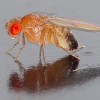
Model Organisms
Oct 12th
I asked a group of 5th graders the other day whether or not we can learn anything from studying other living things. For example, if we mutate or change the DNA of another organism, like fruit flies (D. melanogaster), can we learn anything about what can happen when human DNA changes? For this particular class, it seemed to be an absolutely absurd question. This could have been because the thought of fruit flies made them ill right before lunch, or they were unsure about how much we have in common with fruit flies.
So we got into a discussion about model More >
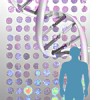
Made to Order
Sep 12th
Preimplantation genetic diagnosis (PGD) is a technique that allows scientists to screen embryos after fertilization through In Vitro Fertilization (IVF), to prevent the transmission of serious genetic diseases for couples who are at risk. It also can be used to screen the egg and sperm before fertilization occurs. Only unaffected embryos will be transferred to the uterus for implantation.
Image from Nature Reviews Genetics 3, 941-955 (December 2002)
While this technology offers the hope to increase the success of IVF, it does raise some concerns about choosing a child in order to meet the needs and desires of parents. While most cases seem to have More >

Addicted cancers
Jun 9th
Most people know that smoking is a hard habit to kick because smokers become addicted to the nicotine and habit. Equally sad is the tendency of young adolescents to start smoking for social and psychological reasons.
In a turn-around of sorts, it may be comforting to know that cancers can become addicted, too. Cancer cells have many different genetic changes, as well as changes in the expression of genes that are not due to mutations called epigenetic changes. Although cancer cells do have many differences from normal cells, they are still very similar to normal cells, making it very difficult to More >
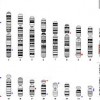
Human Genome Project
May 25th
The initial goal of the Human Genome Project was to find, map and sequence all of the genes within the human genome. Since the completion of the initial draft back in 2000, the White House predicted that this would lead to a new era of molecular medicine, bringing new ways to prevent, diagnose, treat and cure disease.
It has been amazing to see what we have learned since then, but even more interesting to think of where this could go in the future. Hopefully soon we will be able to apply this on a more individual basis, with people being able to More >
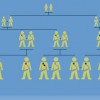
Genes Don’t Exist to Cause Disease
Feb 17th
It is not uncommon during labs on mutations, to discuss that mutations can cause genetic disease. Students will use the phrase “the gene for breast cancer” or “the gene for hemophilia” when these discussions take place. What many think, is that individuals with breast cancer or other genetic diseases have a gene that others do not. In reality, they have a gene that everyone has, but the gene has a mutation that affects its function. Genes don’t exist to cause disease. This is a recurrent theme for me!
For example, when someone has hemophilia (a blood clotting disorder), there is a More >
